Transform your front yard into a stunning oasis with these 31 creative flower bed ideas. Perfect for homeowners, these ideas are designed to enhance curb appeal while being easy to implement and maintain.
Whether you’re looking for modern designs, simple DIY projects, or eye-catching layouts, you’ll find the inspiration to create a gorgeous garden space that complements your home. Get ready to turn heads with your beautiful and inviting front yard!
1. DIY Flower Bed Designs
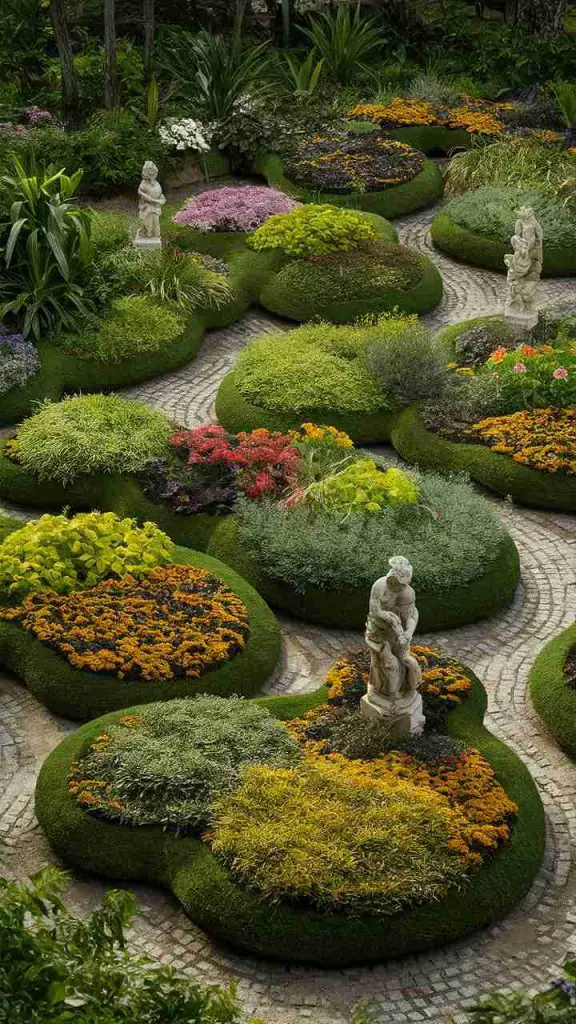
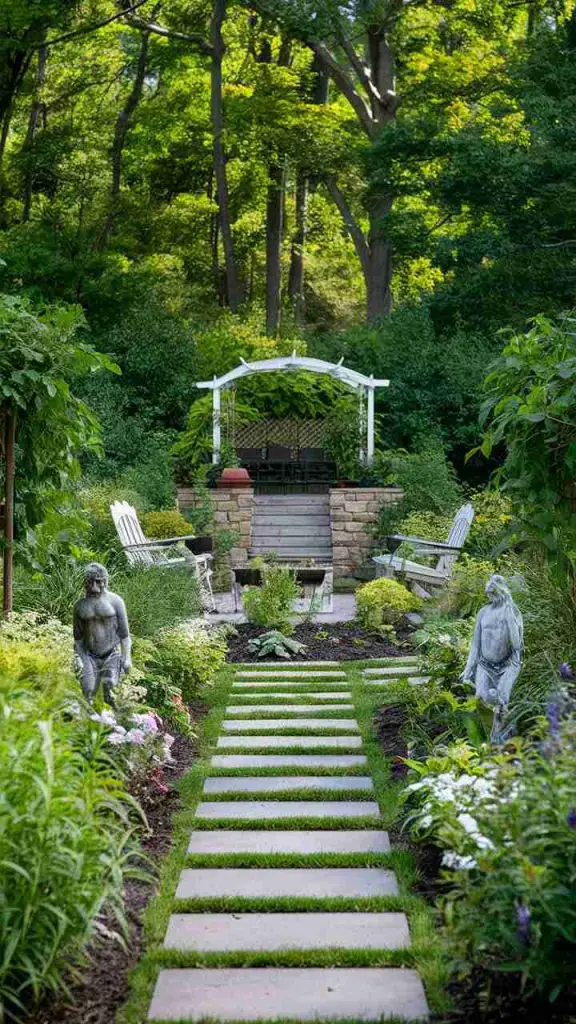

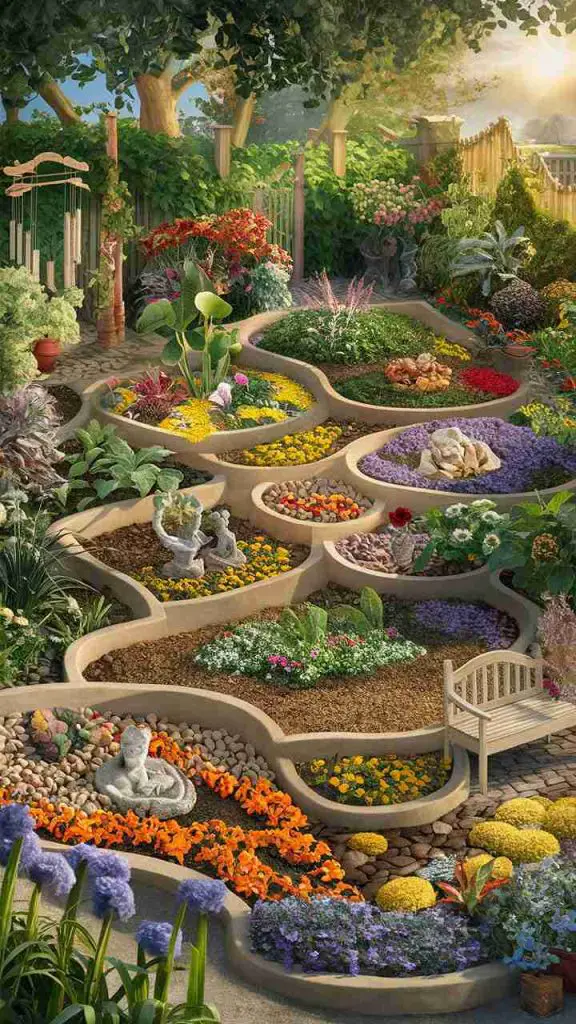
Creating your own flower bed designs can be a rewarding and cost-effective way to beautify your front yard. Start with a clear plan, deciding on the shape, size, and types of flowers you want to include.
Use tools like a garden hose to outline your design, a shovel for digging, and a wheelbarrow for transporting soil and plants. Opt for native plants and perennials, which are easier to maintain and often more resilient.
Add decorative elements like rocks, garden statues, or a birdbath for charm. DIY flower beds allow you to customize your space to reflect your style and preferences, making your front yard a true home extension.
2. Easy Flower Bed Layouts




If you’re looking for a simple way to enhance your front yard, easy flower bed layouts are the way to go. Start with a basic rectangular or circular shape, which is straightforward to maintain.
You’ll need basic gardening tools such as a spade, rake, and gloves. Choose low-maintenance flowers like marigolds, petunias, or hostas, which require minimal care.
Use mulch to help retain moisture and reduce the need for frequent watering. Edging materials like bricks or plastic edging can help define the space and keep it looking tidy. Easy flower bed layouts are perfect for busy homeowners who want a beautiful garden without a lot of fuss.
3. Full Sun Flower Beds




Full sun flower beds are ideal for sunny front yards that receive at least six hours of direct sunlight each day. Choose sun-loving plants like daylilies, lavender, and coneflowers that thrive in bright light.
Prepare the soil with compost to ensure good drainage and nutrient availability. Tools needed include a garden fork, trowel, and watering can. Regular watering, especially during dry spells, is crucial.
Adding a layer of mulch can help retain soil moisture and suppress weeds. Full sunflower beds can add vibrant color and life to your front yard, creating a welcoming and cheerful atmosphere.
4. Curb Appeal Flower Beds
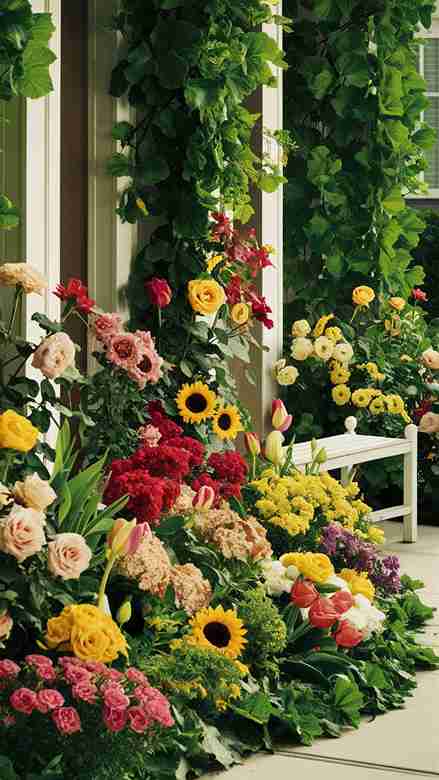



Enhancing your home’s curb appeal with flower beds can make a significant impact. Start by choosing a variety of flowers with different bloom times to ensure year-round color.
Use tools like a soil tester to check pH levels, a garden spade for planting, and pruners for maintenance. Incorporate features like a central focal point, such as a large flowering shrub or an ornamental tree.
Consider adding pathways with stepping stones or gravel to guide visitors. Plants like hydrangeas, roses, and geraniums are excellent choices for a classic and attractive look. Well-maintained flower beds can greatly increase your home’s visual appeal and value.
5. Perennial Flower Beds




Perennial flower beds are perfect for homeowners looking for a long-term investment in their garden. These plants come back year after year, reducing the need for replanting.
Choose a mix of early, mid-, and late-season bloomers like peonies, asters, and black-eyed Susans. Tools required include a trowel, garden fork, and mulch spreader. Prepare the soil with compost to provide essential nutrients.
Mulch is essential to protect the plants during winter and conserve moisture. Regular deadheading of spent blooms will encourage new growth. Perennial flower beds provide enduring beauty and can be a low-maintenance option once established.
6. Texas Flower Bed Ideas



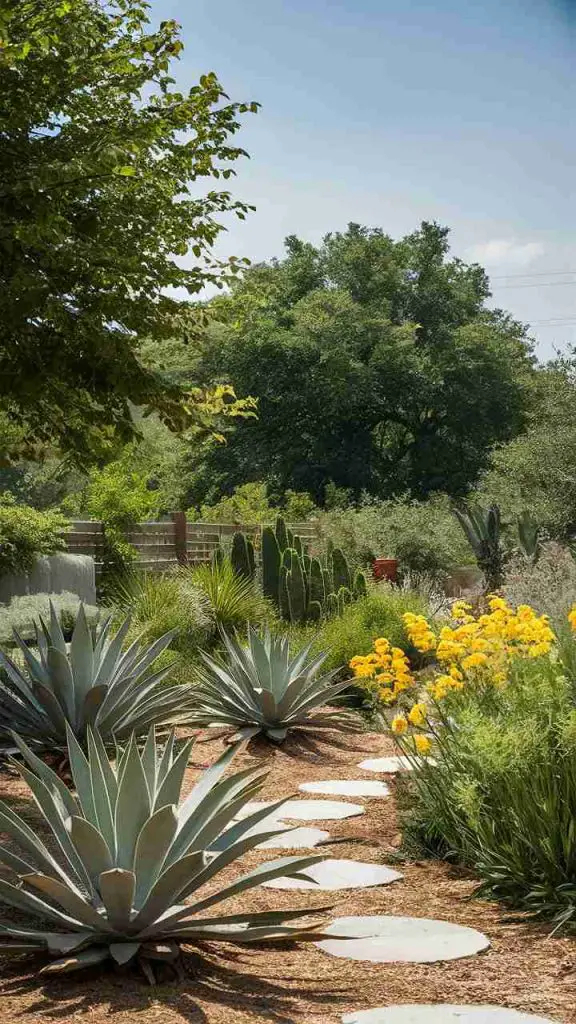
Flower beds in Texas need to withstand the hot and dry climate. Choose drought-tolerant plants like agave, yucca, and lantana. You’ll need a garden hose with a soaker attachment, a spade, and mulch to help retain soil moisture.
Amend the soil with organic matter to improve water retention. Group plants with similar water needs together to make watering more efficient.
Consider using native Texas plants, which are naturally adapted to the local conditions. Mulch and rock features can also help conserve water. Texas flower bed ideas focus on sustainability and resilience, ensuring your garden thrives even in harsh weather.
7. Small Front Yard Flower Beds

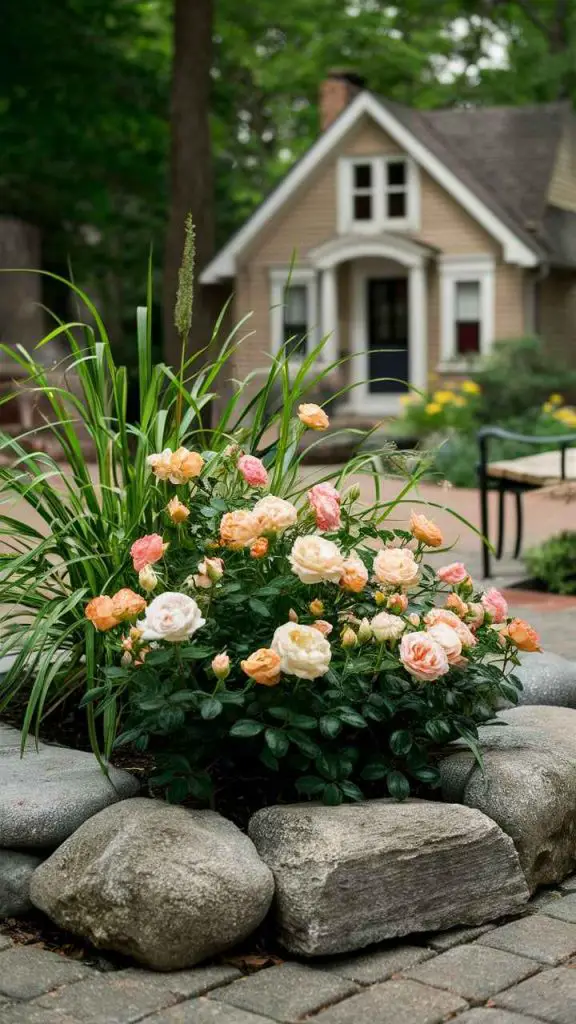


Maximize the potential of a small front yard with compact and efficient flower bed designs. Use vertical elements like trellises and hanging baskets to save space. Tools like a hand trowel, pruners, and a small watering can are essential.
Opt for dwarf varieties of plants like miniature roses, compact lavender, and small ornamental grasses. Create layers by planting taller plants in the back and shorter ones in the front.
Edging with bricks or stones can help define the area and add structure. Small front yard flower beds can be just as impactful as larger ones, offering charm and beauty in a confined space.
8. Modern Flower Bed Designs




Modern flower bed designs focus on clean lines, and minimalism, and often incorporate non-traditional materials. Start with geometric shapes and use contrasting colors and textures. Tools needed include a garden planner app, a tape measure, and a spade.
Plants like ornamental grasses, succulents, and boxwood shrubs work well in modern designs. Incorporate elements like gravel, metal edging, and contemporary planters. Lighting is also crucial, so consider solar-powered garden lights.
Modern flower bed designs create a sleek and stylish look that complements contemporary homes.
9. Sunny Flower Bed Ideas




Choose plants that thrive in full sunlight for sunny spots in your front yard. Sunflowers, zinnias, and marigolds are excellent choices. Tools required include a watering can, garden hoe, and mulch.
Prepare the soil by adding compost to improve its quality and drainage. Water deeply but infrequently to encourage deep root growth. Mulch helps retain moisture and keeps the soil temperature consistent.
Sunny flower bed ideas can add bright and cheerful colors to your garden, making it a vibrant focal point.
10. Florida Flower Bed Ideas

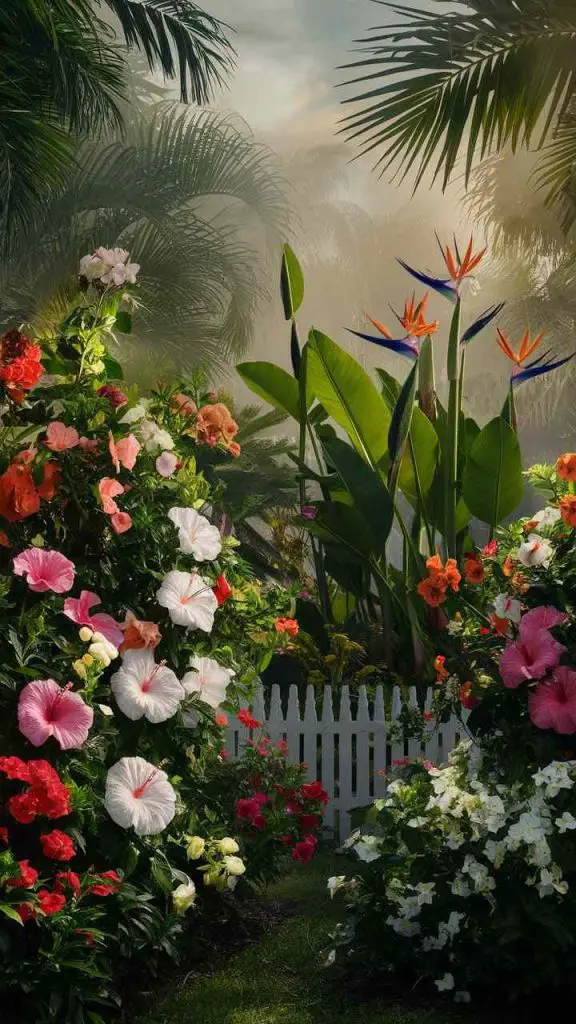

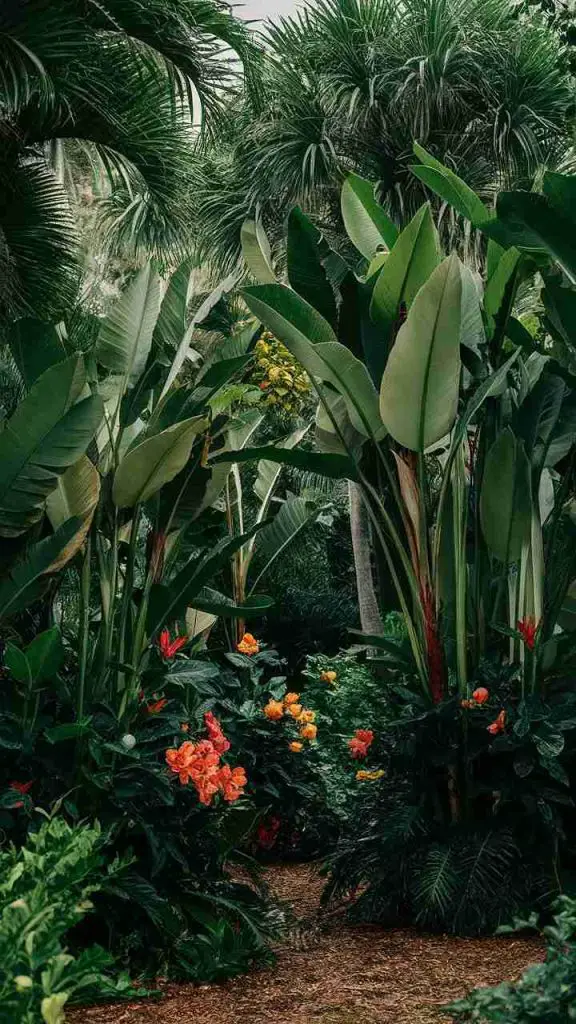
Florida’s warm and humid climate requires plants that can handle heat and moisture. Opt for tropical plants like hibiscus, croton, and bird of paradise. Tools like a hand trowel, a hose with a misting nozzle, and organic mulch are essential.
Improve soil drainage with sand or perlite. Regular watering is necessary, but be careful not to overwater. Mulch helps maintain soil moisture and prevent weed growth.
Florida flower bed ideas focus on lush, vibrant plants that can thrive in the state’s unique climate, creating a tropical oasis in your front yard.
11. Flower Bed Designs Layout




Proper planning is crucial for successful flower bed layouts. Start with graph paper or a garden planning app to sketch your design. Include a mix of heights, colors, and bloom times. Tools required include a measuring tape, spade, and garden fork.
Test the soil to determine its pH and amend it as needed. Place taller plants in the back and shorter ones in the front. Use edging materials like bricks or metal to define the borders.
A well-thought-out layout ensures that your flower bed looks balanced and visually appealing throughout the year.
12. Flower Beds with Rocks




Incorporating rocks into your flower beds can add texture and interest. Use river rocks, gravel, or large boulders to create focal points. Tools needed include a wheelbarrow, garden rake, and gloves.
Start by placing the largest rocks first and filling in with smaller stones. Combine with drought-tolerant plants like sedum, succulents, and ornamental grasses. Rocks can help with drainage and reduce the need for watering.
Flower beds with rocks offer a natural and low-maintenance option that adds visual depth and contrast to your garden.
13. Flower Beds with Black Mulch


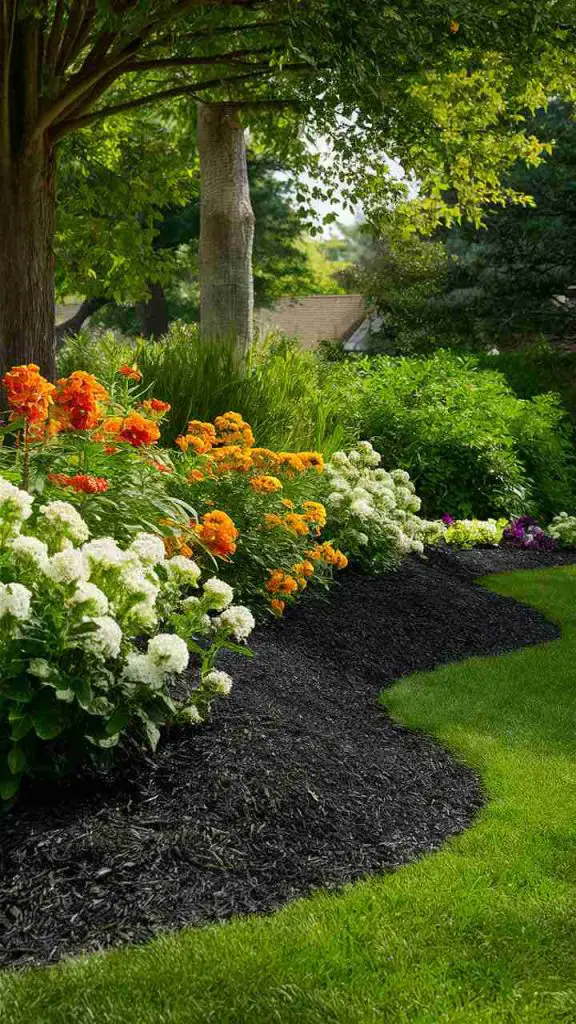

Black mulch can make your flower beds stand out by starkly contrasting your flowers’ bright colors. Use tools like a mulch spreader, garden fork, and gloves. Apply a 2-3 inch layer of black mulch around your plants, careful not to cover the stems.
Black mulch helps retain moisture, suppress weeds, and maintain a consistent soil temperature. It also breaks down over time, adding organic matter to the soil.
Flower beds with black mulch not only look polished but also benefit the health of your plants.
14. Flower Beds with Pots
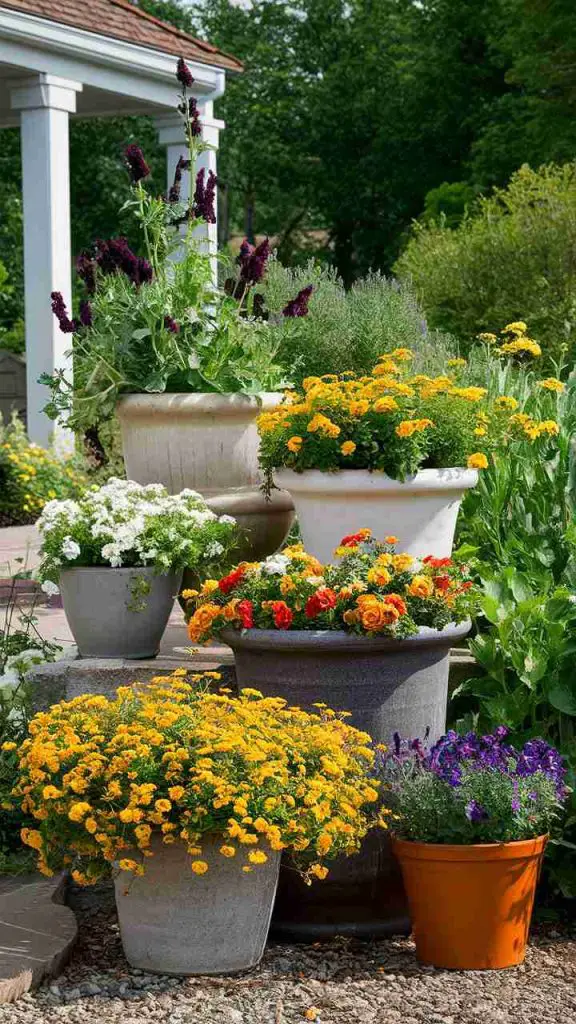

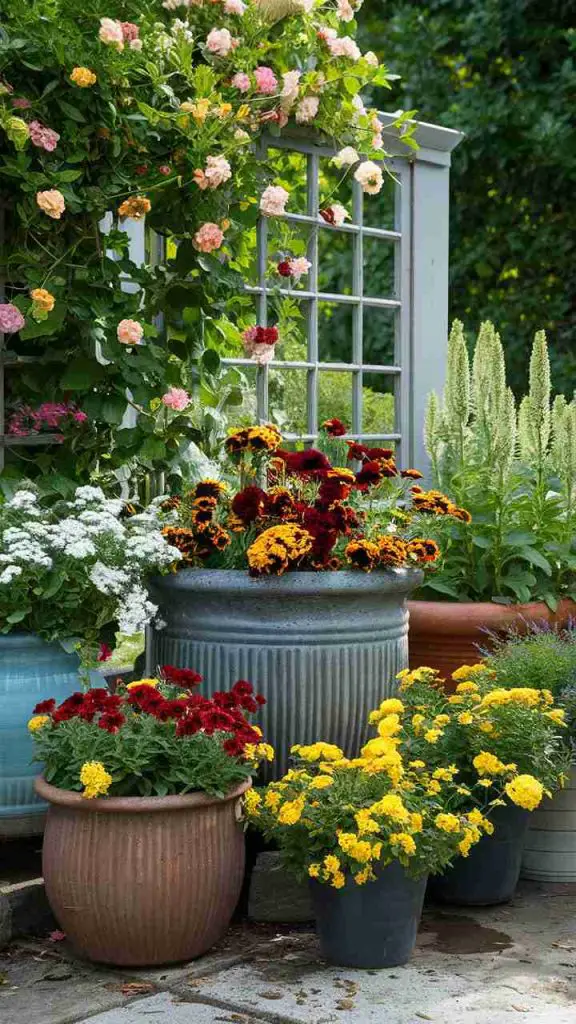

Incorporating pots into your flower beds can add height and visual interest. Use a variety of pot sizes and styles to create a dynamic look. Tools needed include a hand trowel, watering can, and potting soil.
Choose lightweight, weather-resistant pots and fill them with plants that complement your flower bed. Place taller pots in the back and smaller ones in the front. Pots allow for flexibility, as you can easily change the plants with the seasons.
Flower beds with pots add versatility and can be a great solution for areas with poor soil.
15. Flower Beds with Brick Edging


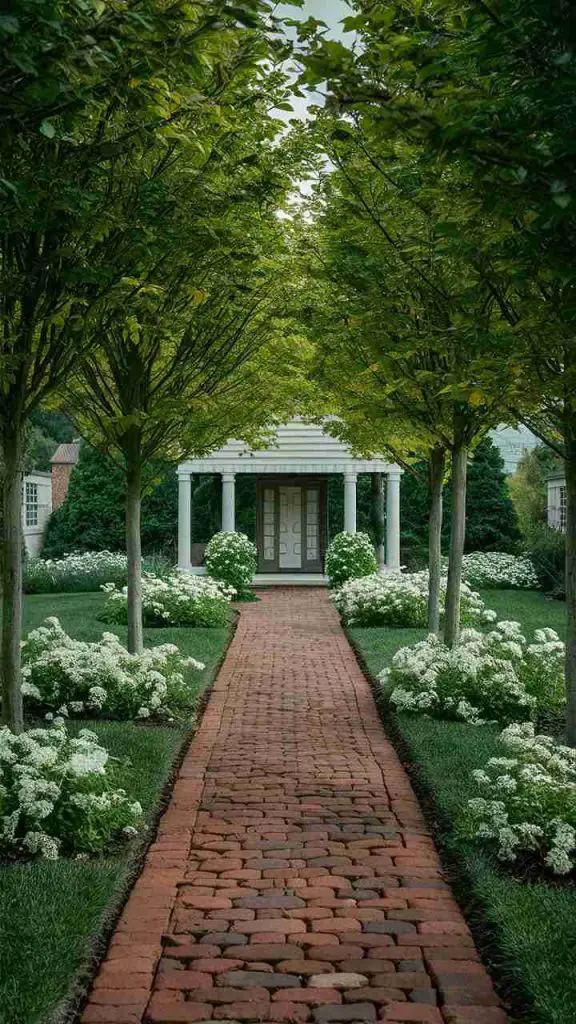

Brick edging adds a classic and clean look to your flower beds. Start by outlining your flower bed with a garden hose. Tools needed include a shovel, rubber mallet, and level.
Dig a trench around the perimeter of your flower bed and place the bricks in the trench, ensuring they are level. Fill in the gaps with soil and compact it. Brick edging helps define your flower bed and prevents grass and weeds from encroaching.
Flower beds with brick edging offer a timeless look that enhances the overall appearance of your garden.
16. Flower Beds for Shade




Shaded areas can also be transformed with the right plants. Choose shade-loving plants like hostas, ferns, and astilbes. Tools needed include a hand trowel, rake, and watering can.
Prepare the soil with organic matter to ensure good drainage. Water regularly, as shaded areas can still dry out. Mulch helps retain moisture and keeps the soil cool.
Flower beds for shade can add lush greenery and create a cool, inviting space in your front yard.
17. DIY Front Yard Flower Beds




Creating DIY flower beds in your front yard allows you to personalize your space. Start by planning your design and gathering materials. Tools required include a garden hose, shovel, wheelbarrow, and gloves.
Choose a mix of plants that suit your climate and soil conditions. Use mulch to help retain moisture and reduce weeds. Adding decorative elements like garden statues, birdbaths, or stepping stones can enhance the look.
DIY flower beds offer a rewarding project that reflects your personal style and creativity.
18. Simple Front Yard Flower Beds





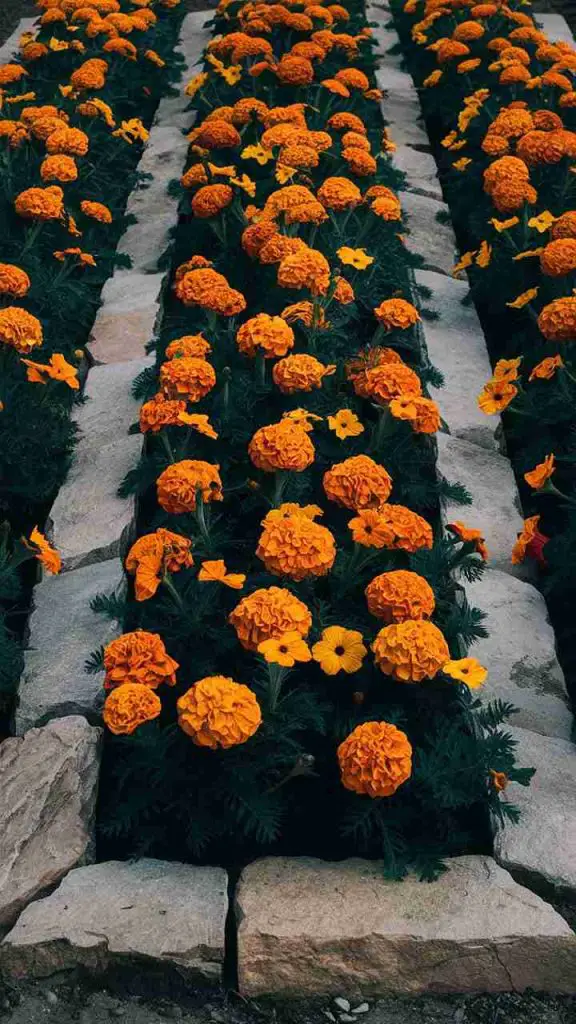
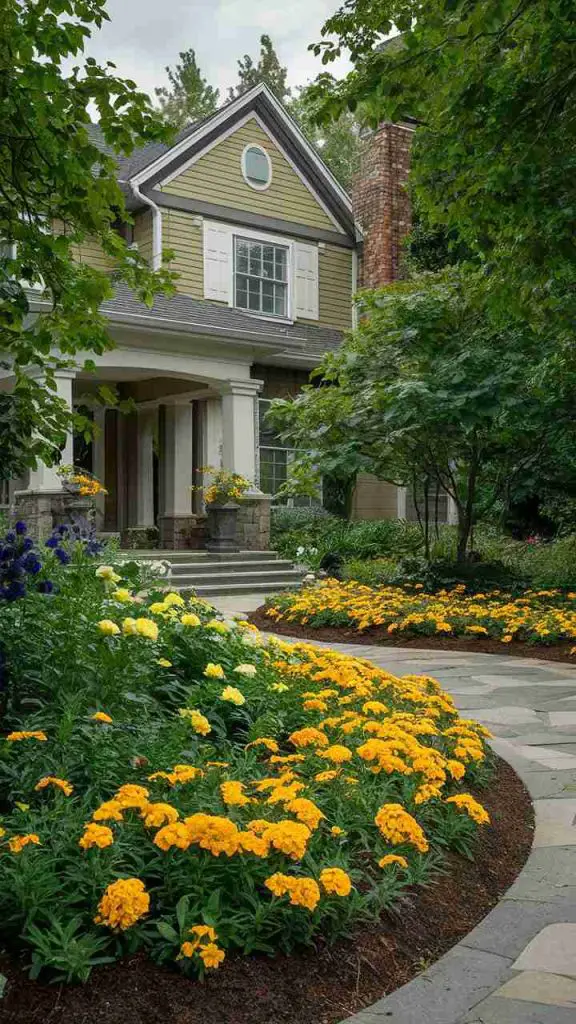

Simple flower beds can make a big impact with minimal effort. Choose easy-to-grow plants like marigolds, petunias, and impatiens. Tools needed include a hand trowel, garden fork, and watering can.
Prepare the soil by adding compost and ensure it is well-drained. Plant in groups for a cohesive look and add mulch to retain moisture. Simple flower beds are easy to maintain and provide a beautiful, low-stress addition to your front yard.
19. Full Sun Front Yard Flower Beds
Maximize the potential of sunny spots in your front yard with full sun flower beds. Choose sun-loving plants like daisies, lavender, and zinnias. Tools required include a watering can, garden hoe, and mulch.
Prepare the soil with compost to improve drainage and nutrient availability. Water deeply but infrequently to encourage strong root growth. Mulch helps retain moisture and suppress weeds.
Full sun flower beds bring vibrant colors and a cheerful atmosphere to your front yard.
20. Front Yard Flower Beds with Rocks




Incorporating rocks into your front yard flower beds adds texture and visual interest. Use a combination of river rocks, gravel, and large boulders. Tools needed include a wheelbarrow, garden rake, and gloves.
Place the largest rocks first, then fill in with smaller stones and plants. Combine with drought-tolerant plants like succulents and ornamental grasses. Rocks can help with drainage and reduce the need for watering.
Flower beds with rocks offer a natural, low-maintenance option that enhances your front yard.
21. Flower Beds in Front of House
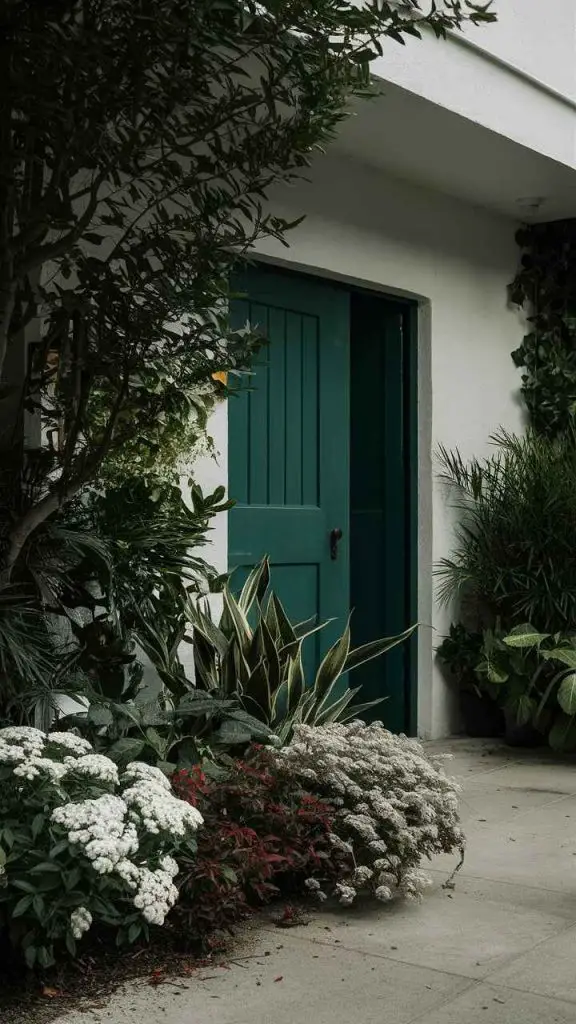
Flower beds in front of your house can create a welcoming and attractive entryway. Choose a variety of plants with different bloom times for continuous color. Tools required include a soil tester, spade, and pruners.
Test the soil and amend it as needed. Place taller plants in the back and shorter ones in the front. Add mulch to retain moisture and reduce weeds.
Flower beds in front of your house can greatly enhance curb appeal and create a warm, inviting atmosphere.
22. Front Yard Flower Beds with Full Sun
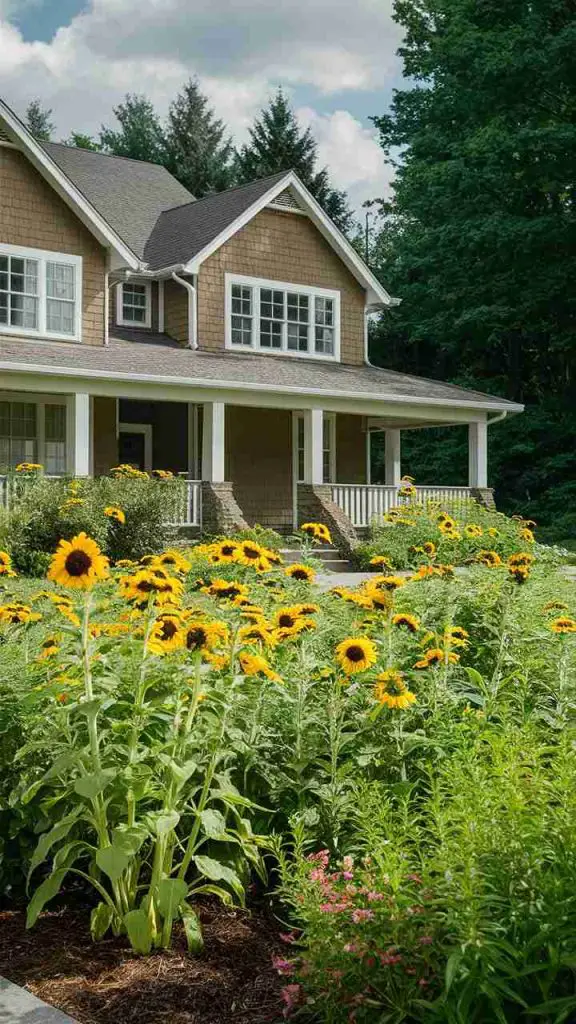



Design your flower beds to thrive in full sun areas of your front yard. Choose plants like sunflowers, coneflowers, and marigolds. Tools needed include a watering can, garden hoe, and mulch.
Prepare the soil with compost to improve drainage and nutrient content. Water deeply and less frequently to promote strong root systems. Mulch helps conserve moisture and keeps the soil temperature stable.
Full sun flower beds add bright, vibrant colors to your front yard, creating a lively and cheerful space.
23. Front Yard Flower Beds with Shade
Create beautiful flower beds in shaded areas of your front yard. Choose shade-loving plants like hostas, ferns, and begonias. Tools required include a hand trowel, rake, and watering can.
Prepare the soil with organic matter to ensure good drainage. Water regularly to keep the soil moist. Mulch helps retain moisture and keeps the soil cool.
Shade flower beds can add lush greenery and create a serene, inviting space in your front yard.
24. Front Yard Flower Beds with Rocks
Incorporating rocks into your front yard flower beds adds texture and interest. Use a combination of river rocks, gravel, and large boulders. Tools needed include a wheelbarrow, garden rake, and gloves.
Place the largest rocks first, then fill in with smaller stones and plants. Combine with drought-tolerant plants like succulents and ornamental grasses. Rocks help with drainage and reduce the need for watering.
Flower beds with rocks offer a natural, low-maintenance option that enhances your front yard.
25. Front Yard Flower Beds with Brick Edging
Brick edging adds a classic and clean look to your front yard flower beds. Outline your flower bed with a garden hose. Tools needed include a shovel, rubber mallet, and level.
Dig a trench around the perimeter of your flower bed and place the bricks in the trench, ensuring they are level. Fill in the gaps with soil and compact it. Brick edging helps define your flower bed and prevents grass and weeds from encroaching.
Flower beds with brick edging offer a timeless look that enhances the overall appearance of your front yard.
26. Farmhouse Style Front Yard Flower Beds
Farmhouse-style flower beds add rustic charm to your front yard. Choose plants like sunflowers, daisies, and lavender. Tools required include a hand trowel, watering can, and garden fork.
Incorporate elements like wooden crates, old metal pails, and rustic garden signs. Prepare the soil with compost to ensure healthy growth. Water regularly and mulch to retain moisture.
Farmhouse-style flower beds create a cozy and inviting atmosphere that complements a rustic home.
27. Simple Front Yard Flower Beds
Simple flower beds can make a big impact with minimal effort. Choose easy-to-grow plants like marigolds, petunias, and impatiens. Tools needed include a hand trowel, garden fork, and watering can.
Prepare the soil by adding compost and ensure it is well-drained. Plant in groups for a cohesive look and add mulch to retain moisture. Simple flower beds are easy to maintain and provide a beautiful, low-stress addition to your front yard.
28. Texas Style Front Yard Flower Beds




Texas-style flower beds need to withstand the hot and dry climate. Choose drought-tolerant plants like agave, yucca, and lantana. Tools needed include a garden hose with a soaker attachment, a spade, and mulch.
Amend the soil with organic matter to improve water retention. Group plants with similar water needs together to make watering more efficient. Consider using native Texas plants, which are naturally adapted to the local conditions.
Texas-style flower beds focus on sustainability and resilience, ensuring your garden thrives even in harsh weather.
29. Perennial Front Yard Flower Beds



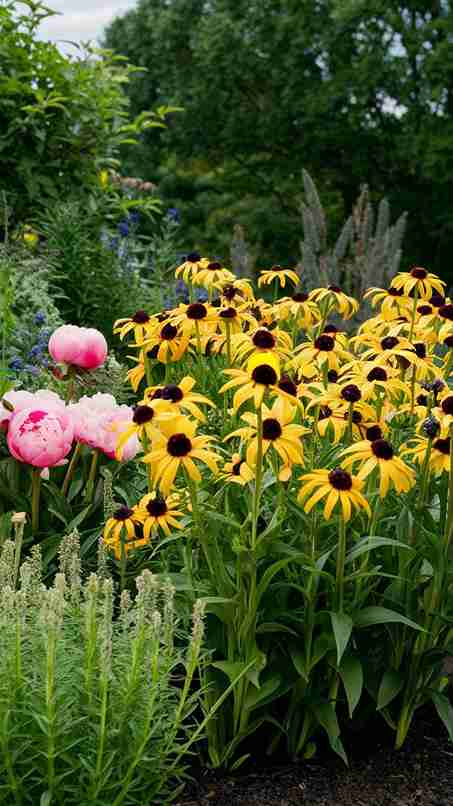
Perennial flower beds are perfect for homeowners looking for a long-term investment in their garden. These plants come back year after year, reducing the need for replanting.
Choose a mix of early, mid, and late-season bloomers like peonies, asters, and black-eyed Susans. Tools required include a trowel, garden fork, and mulch spreader. Prepare the soil with compost to provide essential nutrients.
Mulch is essential to protect the plants during winter and conserve moisture. Regular deadheading of spent blooms will encourage new growth. Perennial flower beds provide enduring beauty and can be a low-maintenance option once established.
30. DIY Front Yard Flower Beds




Creating DIY flower beds in your front yard allows you to personalize your space. Start by planning your design and gathering materials. Tools required include a garden hose, shovel, wheelbarrow, and gloves.
Choose a mix of plants that suit your climate and soil conditions. Use mulch to help retain moisture and reduce weeds. Adding decorative elements like garden statues, birdbaths, or stepping stones can enhance the look.
DIY flower beds offer a rewarding project that reflects your personal style and creativity.
31. Easy to Maintain Front Yard Flower Beds

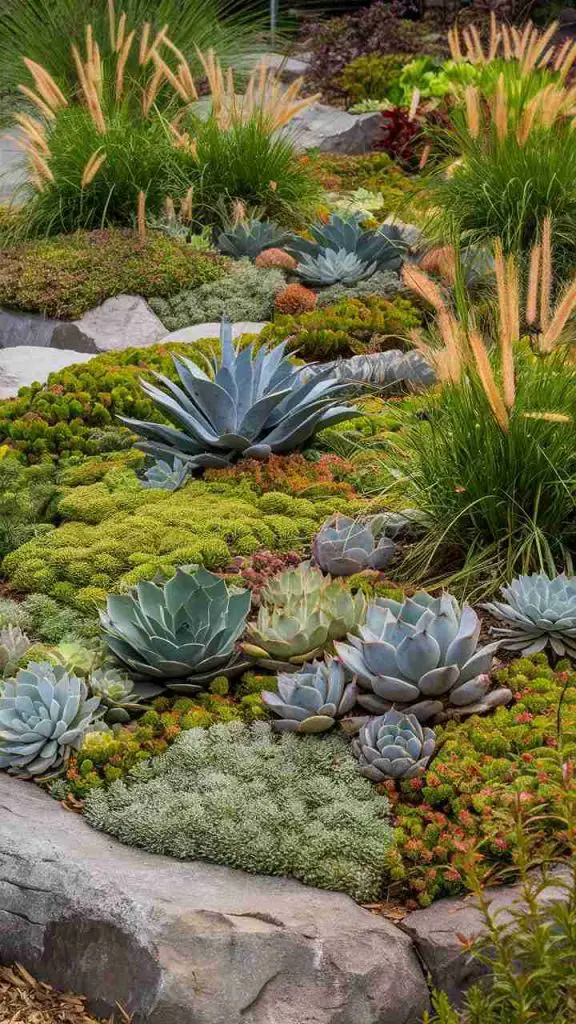


Low-maintenance flower beds are ideal for busy homeowners. Choose plants like succulents, ornamental grasses, and perennials that require minimal care. Tools needed include a hand trowel, mulch, and a watering can.
Prepare the soil with compost to ensure good drainage. Mulch helps retain moisture and reduce the need for frequent watering. Group plants with similar water and light needs together.
Easy to maintain flower beds provide a beautiful garden space without requiring a lot of time and effort.
Bottom Line
Creating a beautiful front yard flower bed doesn’t have to be a daunting task. With these 31 ideas, homeowners and women over 35 can find inspiration to transform their front yards into stunning garden spaces.
From simple and low-maintenance designs to more elaborate DIY projects, there’s something for everyone. Remember to choose plants that suit your climate and soil conditions, use quality gardening tools, and maintain your flower beds regularly to keep them looking their best.
Happy gardening!


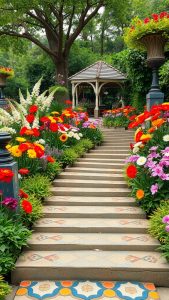
Thanks for some other magnificent article. Where else may anyone get
that kind of info in such a perfect method of writing? I’ve a presentation subsequent week, and
I am on the search for such information.
casino en ligne
Having read this I believed it was very informative.
I appreciate you finding the time and effort to put this
article together. I once again find myself personally
spending way too much time both reading and leaving comments.
But so what, it was still worthwhile!
casino en ligne
Oh my goodness! Awesome article dude! Thanks,
However I am encountering difficulties with your RSS.
I don’t know why I am unable to join it. Is there anybody
else having identical RSS problems? Anybody who knows the solution will
you kindly respond? Thanx!!
casino en ligne
Hello there, You have done a great job. I’ll definitely digg it
and personally recommend to my friends. I’m sure they’ll be
benefited from this web site.
casino en ligne francais
It’s difficult to find experienced people on this topic, however, you seem like
you know what you’re talking about! Thanks
casino en ligne fiable
An impressive share! I’ve just forwarded this
onto a coworker who was doing a little research on this.
And he actually bought me lunch because I stumbled upon it for him…
lol. So let me reword this…. Thanks for the meal!!
But yeah, thanks for spending some time to
talk about this subject here on your internet site.
meilleur casino en ligne
Great article! We are linking to this great content on our website.
Keep up the great writing.
casino en ligne France
Hello, Neat post. There is an issue with your
web site in internet explorer, could test this?
IE still is the market leader and a big element of other
people will miss your great writing due to this problem.
casino en ligne
Hello there! This article couldn’t be written much better!
Going through this post reminds me of my previous
roommate! He constantly kept talking about this. I’ll forward this information to
him. Pretty sure he’ll have a great read. I appreciate you for sharing!
casino en ligne France
Hi, I do think this is a great website. I stumbledupon it 😉 I am going to come back
once again since i have saved as a favorite it. Money and freedom is the greatest way to change, may you be rich and continue to guide others.
casino en ligne fiable